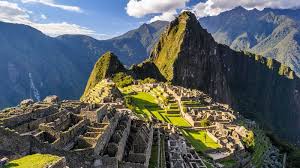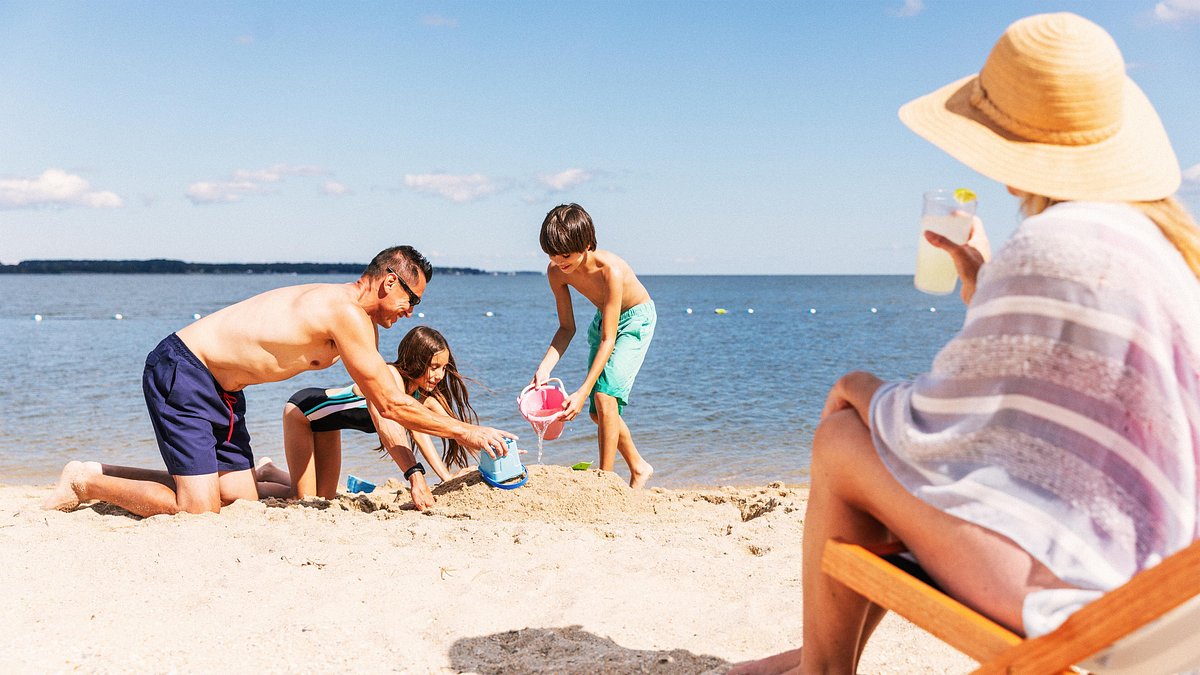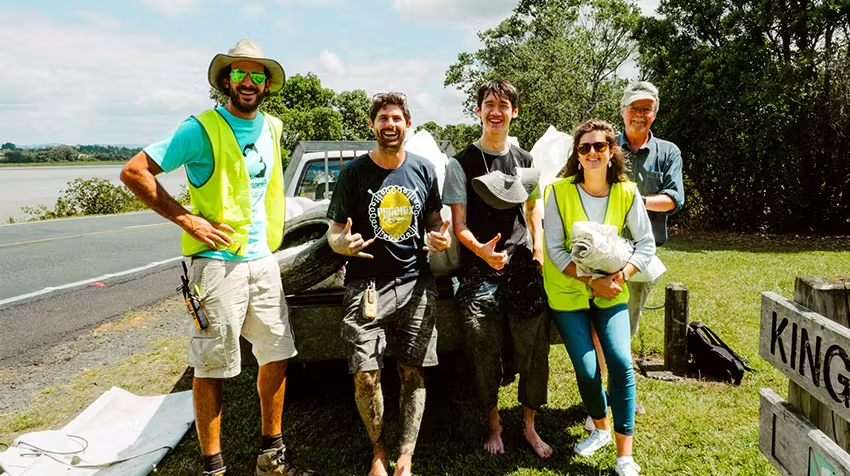
Imagine this: You’re scrolling through your feed, and a colleague posts a sun-drenched photo from a pristine beach, captioning it with something like, “Thanks to our team’s killer quarter at [Your Company], we’re living our best lives in Bali. Couldn’t be prouder to rep this brand!” That post doesn’t just rack up likes—it sparks conversations, envy, and maybe even a few inquiries about your company’s culture. That’s the magic of incentive travel in action, turning employees into genuine cheerleaders who amplify your brand far beyond the office walls. As someone who’s planned a few of these trips in my event management days—watching a sales team transform from stressed spreadsheets to sunset toasts—I’ve seen firsthand how these journeys create advocates who sell your story without you lifting a finger.
In today’s cutthroat market, where 80% of consumers trust peer recommendations over ads, fostering that organic buzz is gold. Incentive travel isn’t just a perk; it’s a strategic lever that boosts loyalty, morale, and yes, your bottom line. Drawing from industry insights like those from the Incentive Research Foundation (IRF), programs like these can spike sales productivity by 18% while building lasting emotional ties to your brand. But let’s dive deeper—because if you’re here, you’re probably wondering how to make this work for you.
What Is Incentive Travel?
At its heart, incentive travel is a company-sponsored getaway awarded to top performers—think employees, partners, or even loyal customers—for hitting specific goals. It’s not your average vacation; these are curated experiences designed to motivate, reward, and yes, weave your brand into unforgettable memories. Picture a sales team qualifying for a luxury cruise or a wellness retreat in Costa Rica, all-expenses-paid, complete with team-building adventures that subtly reinforce your company’s values.
Unlike cash bonuses that vanish into bills, these trips linger. Research from SITE Global shows they’re “priceless,” sparking excitement that drives performance. I’ve chatted with execs who swear by them— one told me their team’s post-trip social shares alone generated leads worth the program’s cost. It’s travel with purpose, blending leisure and loyalty in a way that feels personal, not corporate.
The Power of Brand Advocacy in Business
Brand advocacy happens when people—employees, customers, partners—become your unpaid marketers, sharing stories that build trust and credibility. It’s the difference between a billboard no one remembers and a genuine testimonial that converts. In a world where Deloitte reports 80% of recognized employees stick around longer, turning your team into advocates isn’t optional; it’s essential for retention and growth.
Think about it: Advocates don’t just buy in; they buy for others, creating a ripple of referrals. For businesses, this means lower acquisition costs and higher lifetime value. From my experience coordinating events, I’ve seen quiet performers light up after a shared adventure, suddenly posting about your mission with infectious enthusiasm. It’s emotional glue that sticks, proving why advocacy outshines traditional marketing every time.
Why Employees Make the Best Advocates
Employees know your brand inside out—they live it daily. When you reward them with something extraordinary like a trip, that gratitude flips into evangelism. A study by the IRF highlights how incentive travelers return to work 18% more productive, often sharing their wins in client calls or family dinners, subtly pitching your values.
It’s relatable, too. Remember that time a coworker raved about their company’s “epic team escape” at a barbecue? That’s not scripted; it’s sparked by feeling valued. In my early career, I watched a remote team bond over a virtual-then-in-person incentive hybrid—suddenly, our Slack channels buzzed with brand love that attracted talent we hadn’t even sought.
How Incentive Travel Sparks Advocacy
Incentive travel flips the script from “what’s in it for me?” to “I love this place so much, everyone should know.” These programs create shared stories that employees can’t wait to tell, embedding your brand in their personal narratives. According to ITA Group, post-trip affection often evolves into active promotion, as qualifiers tag your handle in glowing recaps or chat up prospects over coffee.
The key? It’s experiential—sights, sounds, and connections that cash can’t replicate. One exec I worked with joked, “Our Maui incentive turned our sales reps into walking billboards; half our new deals came from ‘Hey, remember that trip…?'” It’s not hype; it’s human connection amplified by wanderlust.
Building Emotional Connections Through Shared Experiences
Nothing bonds like a group hike at dawn or a private chef’s dinner under the stars. These moments strip away titles, revealing vulnerabilities and triumphs that tie back to your brand’s ethos. Emotional appeal here is huge—IRF data shows 95% of participants rate trips as “extremely motivating,” leading to organic shares that feel authentic, not forced.
Humor sneaks in, too: Picture a team bungling a cooking class, laughing it off with your branded aprons on. That lighthearted chaos? It cements loyalty. From my planning days, I recall a group’s “disaster dinner” turning into their signature story, shared yearly at company meets—pure advocacy gold.
Turning Trips into Social Proof
Social media is the megaphone. Encourage subtle shares with branded hashtags or photo ops, and watch the magic. Participants become content creators, their posts reaching networks you couldn’t touch with ads. A TravelPerk report notes this user-generated buzz boosts brand visibility by 28%, as friends and family engage, inquire, and convert.
It’s low-effort, high-reward. One client saw a 15% uptick in inbound leads from trip pics alone. Pro tip: Seed the fun with a group album—keeps the momentum going long after the flight home.
Real-World Examples: Incentive Travel Success Stories
Let’s get real—these aren’t hypotheticals; they’re proven plays from companies who’ve nailed it. Take a global pharma firm that revamped recognition with customizable trips: Teams picked destinations, hitting 120% quotas. Post-trip, employee NPS soared 25%, with reps crediting the adventure for their renewed hustle. Or consider Amway’s 30th bash in 2024—16,000 attendees across Hawaii, generating buzz that spilled into sales spikes.
I’ve got a personal favorite: Coordinating a tech startup’s Iceland escape. Amid geysers and Northern Lights, execs shared vision stories around campfires. Back at base, the team launched a referral wave, crediting those “aurora epiphanies.” It’s stories like these that show incentive travel isn’t expense—it’s investment.
Case Study: A Sales Team’s Bali Breakthrough
For a mid-sized SaaS company struggling with churn, we designed a Bali incentive for top closers: Yoga retreats, beach BBQs, and goal-setting workshops. Qualifiers (15 strong) bonded over surf lessons, returning with a 22% sales lift. One rep’s Instagram thread—”How [Company] fueled my wave-riding wins”—went viral internally, inspiring the next quarter’s push.
The ROI? Beyond numbers, it birthed advocates who now mentor juniors with “Remember Bali…” tales. Light humor: Their “zen fails” video montage became office lore, humanizing the brand in ways emails never could.
Case Study: Partner Loyalty in Costa Rica
A manufacturing giant targeted channel partners with a Costa Rica eco-adventure: Zip-lines, wildlife safaris, and sustainability chats aligning with their green ethos. 40 partners qualified; post-trip surveys showed 90% felt “deeply connected.” Shares on LinkedIn tagged the brand, driving 35% more orders.
Emotional pull was key—one partner teared up sharing how the trip mirrored their shared values. From my vantage, it was a masterclass in turning transactions into tribes.
Benefits of Incentive Travel for Brand Advocacy
The perks stack up fast: Higher engagement, lower turnover, amplified word-of-mouth. IRF’s 2025 trends report pegs incentive programs at a 112% ROI, with advocacy as the secret sauce—employees share 10x more post-trip. It’s not fluff; it’s measurable magic that elevates your brand from vendor to valued partner.
Plus, in a hybrid world, these escapes combat isolation, fostering a “we’re in this together” vibe that spills online. I’ve seen quiet teams turn vocal, their advocacy filling talent pipelines organically.
Boosting Employee Morale and Retention
Happy teams stay—and shout your praises. Deloitte’s stat holds: Recognized folks are 80% more loyal. Trips recharge batteries, reducing burnout while igniting passion. One study found post-incentive retention jumps 31%, with advocates crediting the “family feel.”
It’s heartfelt: That post-trip glow? It lingers, turning watercooler chats into brand anthems.
Enhancing Customer and Partner Relationships
Extend invites to key clients or distributors, and watch alliances deepen. Shared sunsets build trust faster than boardrooms. Power2Motivate notes travel rewards spike loyalty by 40%, as participants evangelize your reliability.
Humor alert: A partner’s “survival story” from a team rafting mishap? It became their go-to icebreaker, weaving your brand into deals.
Pros and Cons of Incentive Travel Programs
| Aspect | Pros | Cons |
|---|---|---|
| Motivation | Drives 18% productivity gains (IRF); creates buzz. | High upfront costs; not everyone qualifies. |
| Advocacy | Organic shares boost visibility 28% (TravelPerk). | Risk of resentment if goals feel unfair. |
| ROI | 112% return via sales/retention. | Logistical headaches like travel disruptions. |
| Culture | Strengthens bonds, reduces turnover 31%. | Inclusivity challenges for remote/diverse teams. |
Weighing these, the upsides dominate for advocacy-focused firms. Mitigate cons with clear comms and hybrid options—I’ve seen it turn skeptics into superfans.
Comparing Incentive Travel to Other Rewards
Cash bonuses? Handy, but forgettable—absorbed into rent. Merch? Nice desk clutter. Travel? It etches memories, per Oxford Economics’ $4:1 ROI edge over salary hikes.
- Vs. Cash: Trips motivate 95% more (IRF); cash feels obligatory.
- Vs. Gifts: Experiential wins spark stories; gadgets gather dust.
- Vs. Time Off: Vacays recharge, but group trips build collective pride.
In my book, nothing rivals the advocacy arc of a shared sunset—it’s the gift that keeps giving.
Best Tools and Providers for Incentive Travel in 2025
Ready to launch? Top picks from TravelPerk and 360Insights include:
- GoGather: Custom itineraries with ROI tracking; ideal for mid-size teams.
- ITA Group: Full-service, advocacy-focused designs.
- Incentivations: Budget-friendly for associations.
For software, try BI Worldwide’s platforms for seamless qualification tracking. Navigational intent covered: Check SITE Global for vetted pros. Transactional tip: Start with a demo at TravelPerk—they’ll tailor a quote fast.
People Also Ask: Common Questions on Incentive Travel
Pulled straight from Google’s PAA for “incentive travel”:
- What is the purpose of incentive travel?
It’s a motivational tool to reward achievements, boosting performance and loyalty. Unlike perks, it creates lasting bonds—think 18% sales lifts per IRF. - How does incentive travel improve employee engagement?
By offering aspirational rewards, it sparks competition and camaraderie. Post-trip, engagement rises 25%, as teams share stories that reinforce company pride. - What are the best destinations for incentive trips?
For 2025, hotspots like Costa Rica (eco-adventures) or Hawaii (luxury escapes) top lists. Align with your crowd—adventure for millennials, relaxation for boomers. - How much does an incentive travel program cost?
Varies by scale: $2,000–$5,000 per person for basics; luxury hits $10K+. Factor ROI—many see payback in months via advocacy-driven sales. - Can small businesses afford incentive travel?
Absolutely—start hybrid or local. Tools like Incentivations offer scalable packages under $1,500/head, yielding big advocacy returns.
FAQ: Your Incentive Travel Questions Answered
How do I measure the advocacy impact of an incentive trip?
Track social mentions, referral rates, and NPS pre/post. Tools like Google Analytics or Hootsuite quantify shares; aim for 20% engagement uplift.
What’s the ideal length for an incentive program?
3–5 days strikes balance—enough immersion without burnout. Shorter for domestic, longer for international; always include free time for organic bonding.
How can I make trips inclusive for diverse teams?
Offer choice (e.g., family add-ons) and accessibility (ground-floor rooms). Surveys pre-planning ensure buy-in—I’ve seen inclusivity double participation.
Are there sustainable options for incentive travel?
Yes! Eco-lodges in Costa Rica or carbon-offset flights via providers like Brightspot. It aligns with values, boosting advocacy among Gen Z (63% prioritize per 2025 trends).
How soon can I launch a program?
6–12 months for custom; 3 for off-the-shelf. Start with goals—sales spike? Partner loyalty? Quick wins via local escapes build momentum.
There you have it—your roadmap to turning trips into triumphs. Incentive travel isn’t just about the destination; it’s about the devotion it ignites. If one story here resonates, imagine what yours could spark. Ready to plot your next chapter? Drop a line—let’s make your brand the one everyone raves about.




More Stories
10 Benefits of Incentive Travel Schemes
What is Incentive Travel? Benefits and Execution Guide
10 Tips for Planning a Corporate Incentive Travel Program